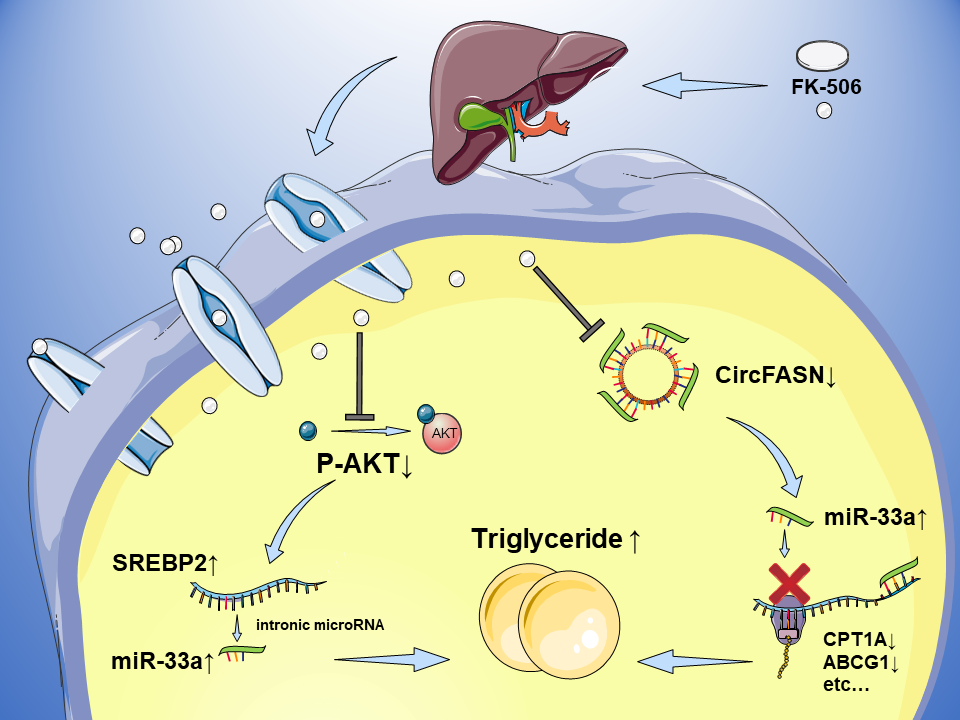Key role of non-coding RNAs identified for metabolic diseases in liver transplant recipients
Recently the underlying molecular mechanism of metabolic diseases in liver transplant recipients was explained from the noncoding-RNAs level for the first time. Led by Dr. XU Xiao in the First Affiliated Hospital of Zhejiang University School of Medicine, this study was published in the Signal Transduction and Targeted Therapy.
Since 2015, China have become the second largest country for organ transplantation. It is estimated that more than 6,000 liver transplants are completed each year. However, for approximately up to 40-60% patients the incidences of post-transplant metabolic diseases,such as post-transplant diabetes mellitus, hyperlipidemia, will occur, which severely restricted transplantation efficacy and receipts prognosis. According to this work, the monitoring of plasma mir-33a level in transplant recipients could effectively and sensitively alert the early occurrence of hyperlipidemia after transplantation. The study also confirmed a circFASN/miR-33a signaling pathway, which played a key role in hyperlipidemia and transplanted liver steatosis. Additionally, the study proved that targeting mir-33a treatment could significantly ameliorate accumulations of fatty acids in liver and improve transplanted liver steatosis. The above results provide new ideas and strategies for the effective diagnosis and treatment of complications after liver transplantation and long-term survival of recipients.

Schematic representation of the circFASN/miR-33a regulatory system in TAC-induced disruption of lipid homeostasis in terms of liver